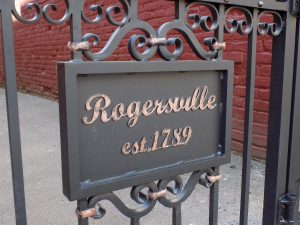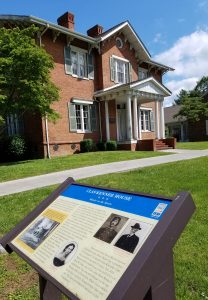ECW Weekender: Rogersville, Tennessee

 Tucked in the rolling hills of East Tennessee, Rogersville has a storied history dating back to the Colonial Period. Like most communities in East Tennessee, Rogersville had divided loyalties during the Civil War.
Tucked in the rolling hills of East Tennessee, Rogersville has a storied history dating back to the Colonial Period. Like most communities in East Tennessee, Rogersville had divided loyalties during the Civil War.
Though Tennessee seceded and joined the Confederacy, the eastern part of the state held closer ties to the Union and literally created a local civil war within The Civil War. Men from Rogersville fought on both sides, and disagreements provoked murder on the streets during 1862. In 1863, a lesser-known battle occurred near the community, pitting Federals and Rebels against each other in a surprise contest for the town’s location, transportation, and supplies.
Today, the town is a peaceful scene, a community steeped in history. If you catch the main street view on in a quiet moment with perfect lighting and the chirp of a bird or hum of the insects, you might be able to imagine what this brick town might have been like during the 1860’s. It’s one of those wonderful locations where perhaps time has stood still and the echoes of the old conflict still linger.
Davy Crockett’s grandparents settled in the area that became Rogerville, starting a small community. It became a town and the county seat for Hawkins County in 1789 and claims the honor for being the second oldest town the state. Many of the still standing buildings in the historic district pre-date the Civil War.

For example, the town square has a preserved building on each corner. Hawkins County Courthouse, built in 1836 is the oldest, original courthouse still used in Tennessee. The Masonic Temple building across from the courthouse dates to 1839, when it was first used as a branch of the Bank of the State of Tennessee. (Unfortunately, this bank invested heavily in Confederate bonds and collapsed at the end of the Civil War.) Hale Springs Inn welcomed Union officers during the Civil War while the Kyle House (1837) across the square hosted Confederate officers.
Communication and transportation formed part of the Rogersville Community from the early days. The first newspaper – Knoxville Gazette – started in Rogersville in 1791, and the town now features the Tennessee Newspaper and Printing Museum. The railroad came through Rogersville and the 1890 train station stands on the corner of Broadway and Depot, containing offices for the historical association.
Rogersville – like other East Tennessee – communities had divided loyalties. John Bynum had helped raise the first Confederate unit from the area in 1861; that group – known as the Hawkins County Boys – went on a raid and killed a Unionist civilian named William Byrd. As the county descended into lawless conflict, sides didn’t always matter and some men took the opportunity to get revenge for other perceived offenses. In 1862, John D. Riley – a long-time hater of Bynum – shot him with a shotgun in front of the Bank of Tennessee in the middle of town. Strangely, Riley and Bynum both supported the Confederacy, but local diarists revealed a long-standing animosity between the men which the war and uncertain times allowed Riley to take advantage of. (Riley was never brought to trial).

Civil War Trails placed a marker in front of the Bynum house, which stands near the local library. There is also a marker for the Battle of Big Creek at the crossroads of W. Bear Hollow and Burem Roads.
On November 6, 1863, the Battle of Rogersville – also called the Battle of Big Creek – occurred. Confederates under General William E. Jones surprised the Union troops in town, pushing them across the Holston River, allowing the town to remain in Southern hands for the remainder of the war. Jones wrote that he captured at least 775 prisoners and scored a large capture of supplies. With Rogersville back in Confederate hands, the road between Bristol and Knoxville remained open for a while longer.
The community had seen soldiers and local military skirmishing, but this battle brought the realities of war to the doorstep. In the words of a Kentucky soldier who witnessed the battle: “I want to see no more battlefields. The utter destruction of property & life. All kinds of clothing & camp equipage; scattered in profusion over the ground. Horses shot dead at their hitching post, or rolling in the agonies of death – and the dead & wounded men neglected lying there alone-alone-alone.”
The traces of violence and war are buried and diminished in Rogersville. However, the sites of conflict, the places where Civil War officers stayed, and local history stories still remain, offering much to explore on a weekend trip to this East Tennessee town.

For more details about historic Rogersville, visit the town’s website:
https://www.townofrogersville.com/index.html
Or reference this article for more information about the historic buildings in the historic district:
http://www.therogersvillereview.com/columns/article_06dd40ca-b395-11e4-8849-6fb08fec857a.html
Interesting to learn how the war effected towns like this .
Birthplace of CS LTG A.P. Stewart